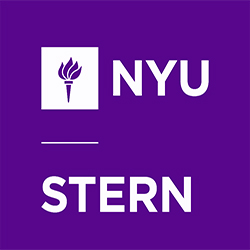One of the best parts about Stern is getting to learn from incredible professors who are experts in their fields. While many of my classes are engaging, there is one class that stands out above the rest: “Strategic Foresight and Predicting the Future of Technology” with professor Amy Webb. The objective of the class is to introduce students to the methods, concepts, frameworks, tools and techniques of strategic foresight, a multidisciplinary approach to deriving new insights about the future. To deliver on this promise, the class is organized into three sections each week 1. Introduction to methodology and a foresight tool 2. A deep dive into an emerging area of technology and 3. Practicing what we learned and applying concepts and tools to our final group project. Not only is the topic of strategic foresight extremely interesting, but the structure of the class also ensures that discussions are relevant and concepts can be applied to any business sector. We learn to identify signals in the world and make connections to form potential trends. We are challenged to imagine what the future of meat consumption will look like in 10 years, what the future of work will be in 15 years, and what the future of media will look like in 20 years. We learn to address assumptions and state uncertainties and back up our scenarios with quantitative and qualitative evidence. To give you a sense of the breadth of what I’ve learned so far, here are some of my favorite things we’ve discussed in class…
1. Why is Nintendo the most innovative company? When we think about Nintendo, we might think about Mario Party or Pokemon, but Nintendo was founded in the 1880s. Nintendo originally sold hand-painted playing cards. As the world evolved and technologies developed, Nintendo paid attention to the signals on the “fringe” and made bets to ensure they could stay in business. Nintendo transitioned from selling playing cards to developing games for malls, handheld gameboys, commercially available video game consoles, the motion sensor Wii, and many more innovations. This example clearly highlighted how companies can use strategic foresight to prepare for the future and remain ahead of their competition.
2. How will a refrigerator be used in 2031? At the start of class we are asked to do a re-perception exercise in which we imagine how everyday objects might be used in the future. Recently we discussed how refrigerators might be used to grow our own food at home, store essential pharmaceuticals, or in new areas of the supply chain as the world becomes warmer. This led to a discussion about when an object is still considered the original object…
3. What are the implications of synthetic influencers? We’ve learned about synthetic influencers like Lil Miquela and K-pop group “Eternity” in class. Prior to this class, I was not familiar with synthetic influencers and their potential impact on not only the entertainment and media industries, but also on society at large.
Throughout the semester, we work on a final group project. This is a great opportunity to apply the theoretical concepts and frameworks we learned step by step.
If you are interested in technology, want to challenge yourself to think differently about companies, societies, and governments, like to imagine what our futures look like, or just love learning new things, then this class is for you. Every week I look forward to rich discussions that develop because this class is a safe space for learning and taking risks. Each week the class time flies by as I absorb information from the professor and her guests lecturers/ class coaches. If you have the chance, definitely take this class!
